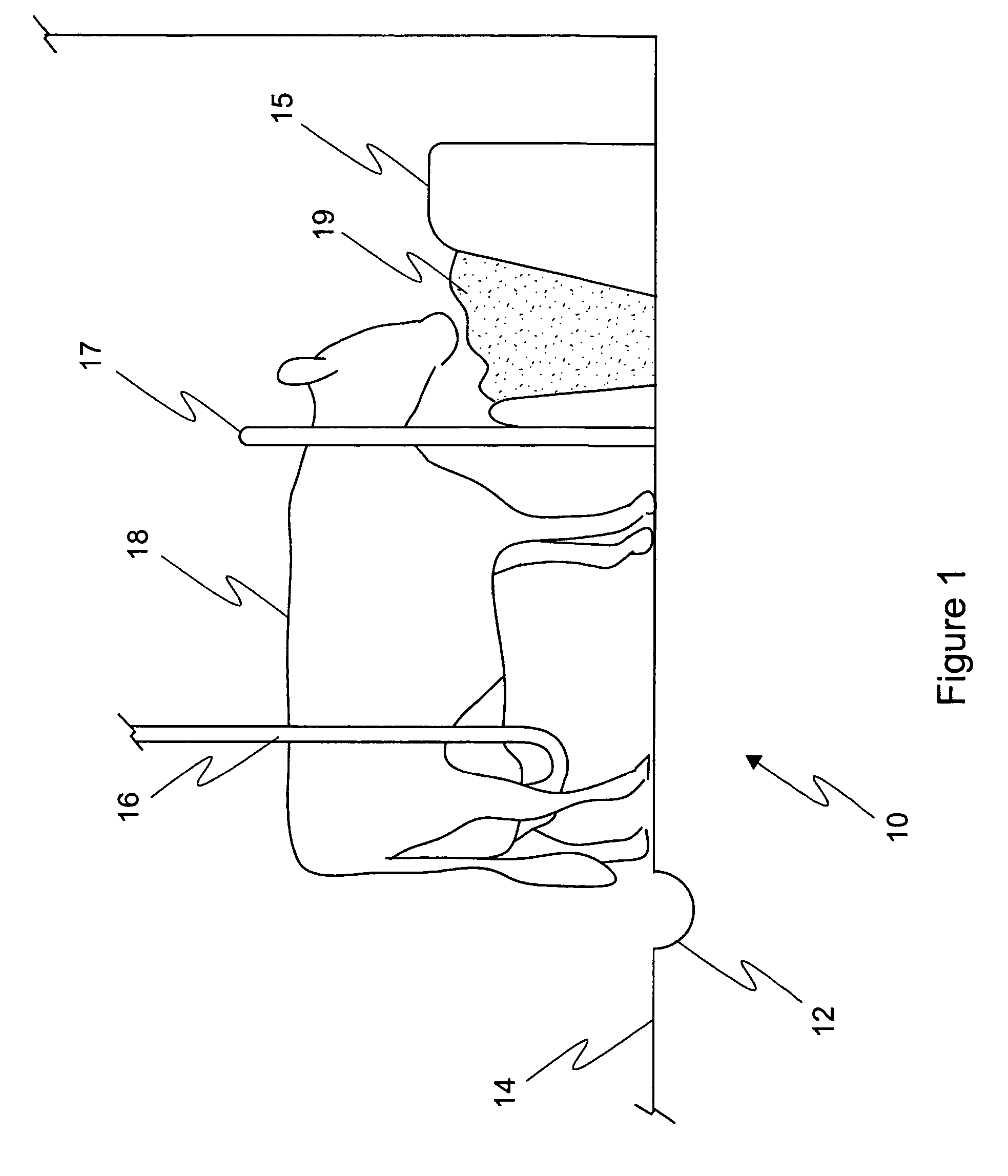Biological processing of animal waste
a technology of biological compositions and animal waste, applied in the field of biological compositions, can solve the problems of reducing the amount of organic waste, affecting the growth of vegetation, and affecting the quality of life of the plant, so as to facilitate the delivery of oxygen, and enhance the effect of vegetation growth
- Summary
- Abstract
- Description
- Claims
- Application Information
AI Technical Summary
Benefits of technology
Problems solved by technology
Method used
Image
Examples
example one
[0071]There is a dry organism amount, including a selection of bacteria, in particular bacillus bacteria that is produced by the organization known under the mark “SafeWaze” that is located at 7411 N. Tryon Street in Charlette, N.C. 28213.
[0072]The Bacillus Package, referred to above, includes, but is not limited to specific strains of bacillus including Bacillus Subtilis, Bacillicheniformis, and Bac Megatherium. The microbes are contained in an inert preparation of a natural absorbent which has no chemical impact, combined with powder bran grain as a food source.
[0073]There is a dry microorganism amount that includes base soil bacteria, for example, the product known under the brand name Soil Response™. The product known as Soil Response™, is attributed to SafeWaze at 7411 N. Tryon Street in Charlette, N.C. 28213. The product known as Soil Response™ is a mixture of active hydrocarbon oxidizing, natural single-cell organisms, specifically for use on soil including, but is not limite...
example two
[0077]
Approximate Percent by VolumeDry Bacteria Culture 5%Yeast 1%Soybean Protein18.75%Nutrient Mineral Mix18.75%Humate18.75%Granulated Sugar18.75%Flour18.75%
[0078]The nutrient mineral mix included crude protein, crude fat, salt, calcium, chlorine, magnesium, phosphorous, potassium, sodium, sulfur, cobalt, copper, iodine, iron, manganese, and zinc.
example three
[0079]Examples of materials which are includable in embodiments include a variety of different biological and food mixes including soy protein use for animal feed supplements, mineral mixes used in animal nutrition, protein packages used in body building and dietary supplement, flours, sugar, raw molasses, yeast, various enzymes used in waste treatment, laundry soaps and the product sold under the mark Oxy Clean. Also included are various combinations of products including the product sold under the marks ViBasic, Xcite and ViPlex from the organization under the mark Vitech Industries. Further examples include the product under the mark Esp333, both liquid and dry, as well as a protein feed supplement from the organization under the mark Bio-Kinetics, soil stimulant from the organization known as Fertile Earth, along with various combinations of fertilizers.
PUM
| Property | Measurement | Unit |
|---|---|---|
| time | aaaaa | aaaaa |
| thick | aaaaa | aaaaa |
| biological compositions | aaaaa | aaaaa |
Abstract
Description
Claims
Application Information
 Login to View More
Login to View More - R&D
- Intellectual Property
- Life Sciences
- Materials
- Tech Scout
- Unparalleled Data Quality
- Higher Quality Content
- 60% Fewer Hallucinations
Browse by: Latest US Patents, China's latest patents, Technical Efficacy Thesaurus, Application Domain, Technology Topic, Popular Technical Reports.
© 2025 PatSnap. All rights reserved.Legal|Privacy policy|Modern Slavery Act Transparency Statement|Sitemap|About US| Contact US: help@patsnap.com



